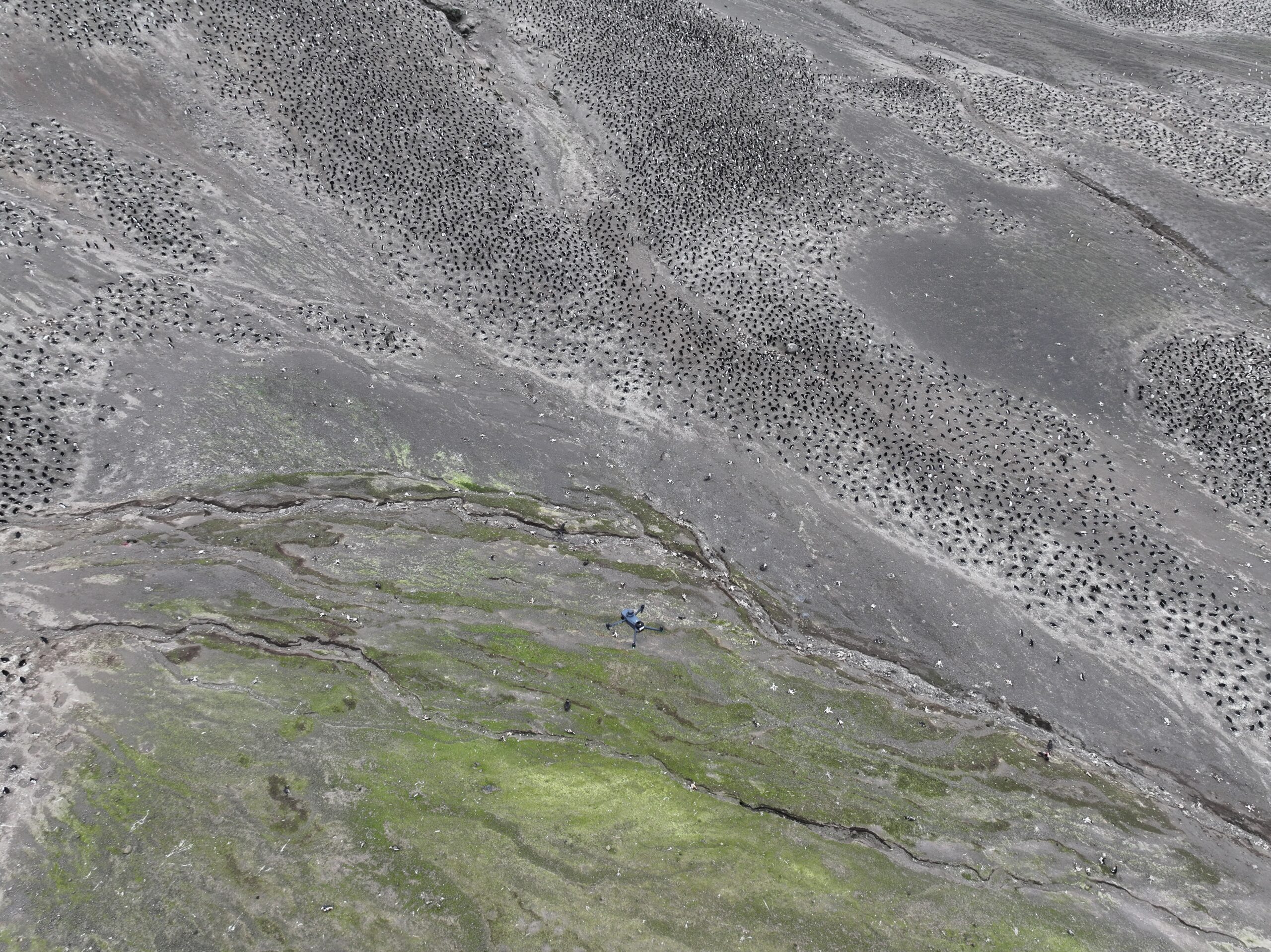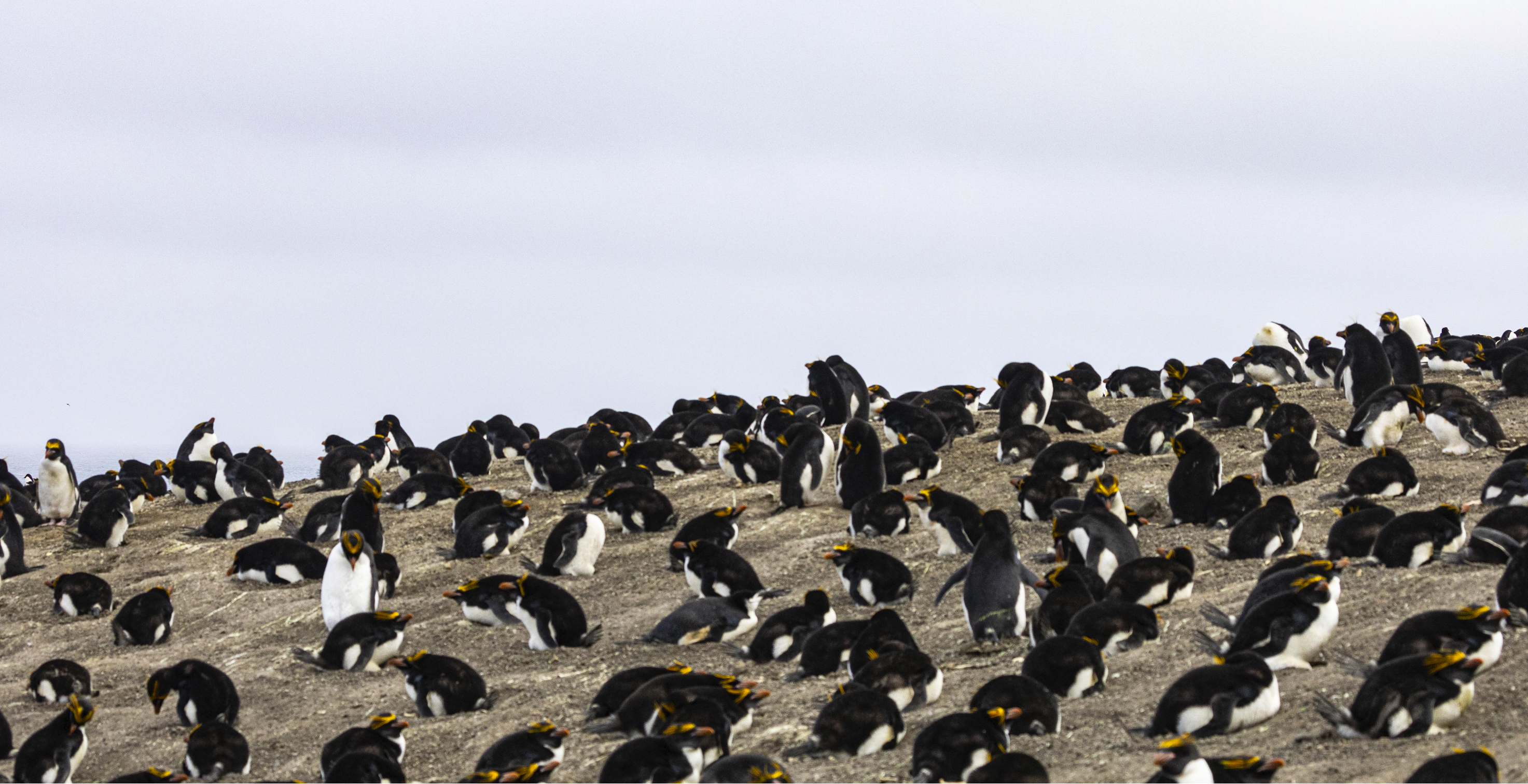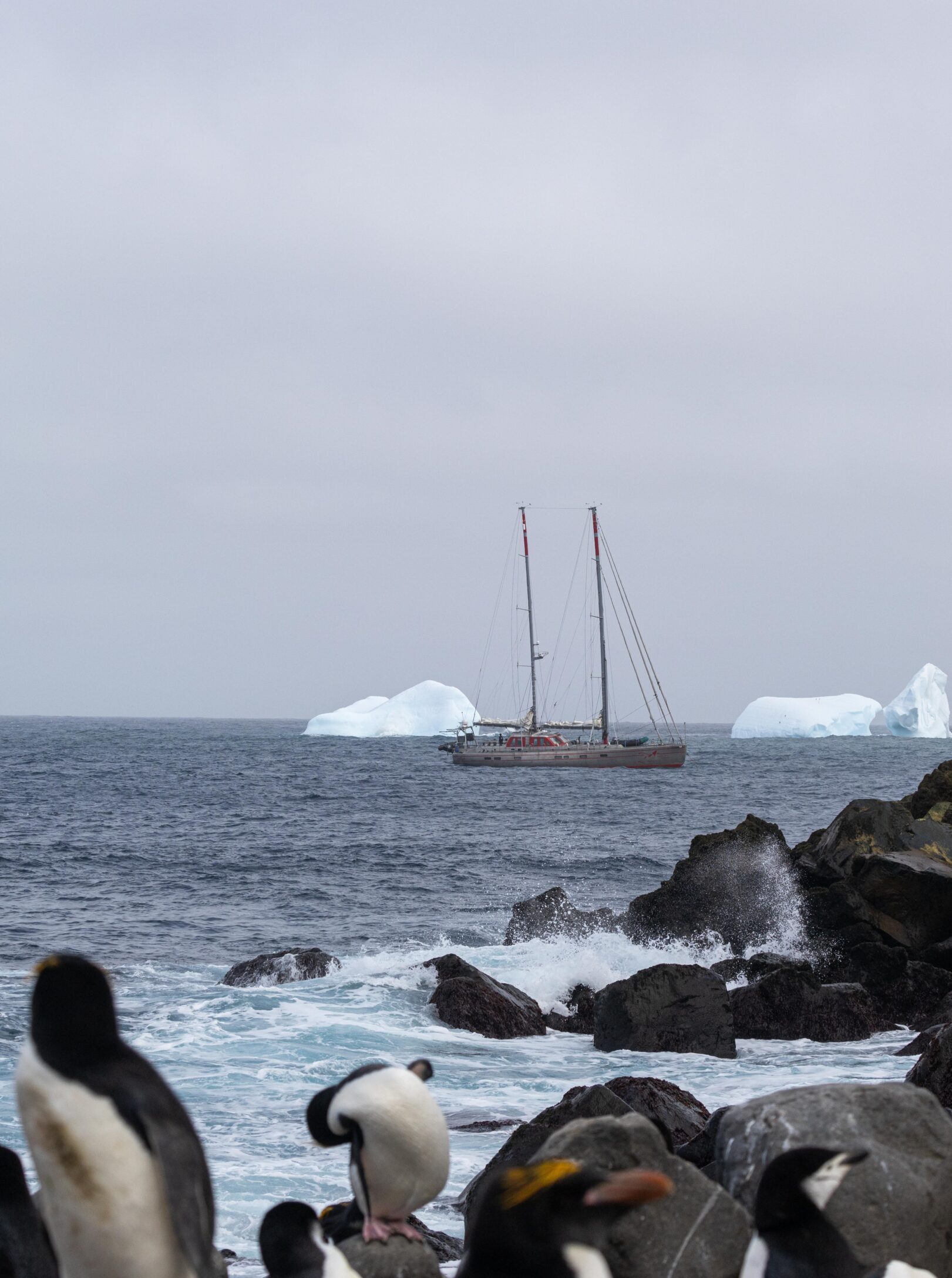Researchers from British Antarctic Survey (BAS) have carried out aerial surveys of the remote volcanic Zavodovski Island in the sub-Antarctic to count the largest penguin colony in the world.
Zavodovski Island is home to the largest penguin colony in the world, containing over one million breeding chinstrap penguins, as well as unique terrestrial biodiversity: mosses, lichens and invertebrates that survive the cold around volcanic vents.

The island is an active volcano, with a sheer coastline exposed to rough seas; Zavodovski last erupted in 2016, covering up to half the island in a layer of ash. Because of the logistical challenges it presents for fieldwork, there have been limited surveys on the wildlife on and around Zavodovski Island.
As part of a wider Darwin PLUS funded project, a team of six scientists made the 1,300-mile journey from the Falkland Islands, sailing for seven days across one of the world's roughest oceans. Arriving on the island in early December, the team set up camp for three weeks to collect the first scientific data for conservation of species on the island threatened by environmental change.
The team surveyed the huge chinstrap and macaroni penguin colonies and terrestrial biodiversity using ground counts and aerial surveys from drones flying at 50m altitude. These much more detailed images were used to check the accuracy of data from higher-altitude survey photos. If these aerial photos prove to be an accurate way of monitoring penguin populations and terrestrial biodiversity, it means they can be used to monitor the colonies in the future, reducing the need for risky and expensive expeditions to the island.

These aerial and on-the-ground surveys are part of a wider project, which will inform the Government of South Georgia and the South Sandwich Islands management plans for the wider South Sandwich Islands and the surrounding ocean. The researchers also tagged penguins with satellite transmitters, and are tracking their movements to find out how well the existing Marine Protected Area encompasses the penguin's main foraging areas. They also collected penguin poo, or guano, and will now analyse it using DNA fingerprinting to reveal what they are eating.

Norman Ratcliffe, ecologist at British Antarctic Survey, and project lead says:
"We know that Zavodovski Island has unique biodiversity and is a globally important place for penguins, but our scientific data is incredibly limited because it is such a hard place to visit. This project is a real collaborative effort to create that baseline data for the island, and reliable methods for monitoring it in the future, so that informed decisions can be made about how to manage and protect species there."
You can follow the penguin tracks, updated daily from December, on this webpage.






